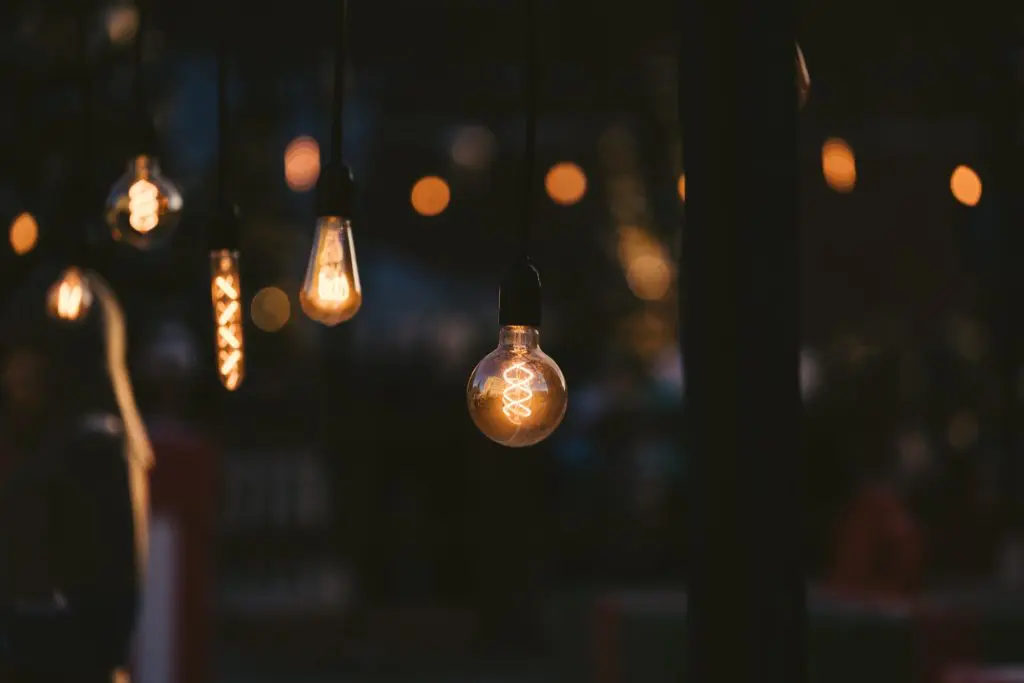Photography is often said to be the art of capturing light, and for good reason. Lighting is one of the most important elements in any photograph, as it can dramatically affect the mood, tone, and clarity of an image. Mastering lighting in photography can elevate your work and help you achieve stunning, professional-quality results. Whether you’re shooting portraits, landscapes, or product photography, understanding how to control and manipulate light is crucial for getting the best possible images.
In this article, we’ll explore the fundamentals of lighting in photography, provide useful techniques, and discuss how to work with different lighting conditions to enhance your photography. By the end of this guide, you’ll have the tools to master lighting and create captivating images that stand out.
Key Takeaways:
- Lighting is the most important element in photography, influencing mood, depth, and clarity.
- Understand the different types of light—natural, artificial, hard, and soft—and how to manipulate them.
- Experiment with lighting angles, modifiers, and light sources to create unique and dramatic effects.
- Mastering lighting takes practice, but with time, you’ll be able to control the light to fit your creative vision.
Understanding the Basics of Lighting in Photography
To master lighting in photography, you need to first understand the different types of light and how they influence your photos. Broadly, light can be categorized into two types: natural light and artificial light. Each of these types has its own characteristics, and both can be manipulated to suit your creative vision.
1. Natural Light
Natural light comes from the sun, and its quality changes throughout the day and according to weather conditions. It can be soft, diffused, and flattering, or harsh and dramatic, depending on the time of day, weather, and your environment.
- Golden Hour: The period shortly after sunrise or before sunset is referred to as the “golden hour,” and it’s famous for providing soft, warm, and diffused lighting that flatters skin tones and creates long shadows.
- Overcast Days: Cloudy days provide soft, diffused light that reduces harsh shadows, making them ideal for portrait photography.
- Midday Sun: The sun at midday is direct and harsh, creating strong shadows and highlights. While this light can be challenging, it’s also useful for dramatic, high-contrast photos.
2. Artificial Light
Artificial lighting refers to any light source that doesn’t come from the sun, including lamps, studio lights, and flash units. Mastering artificial light is essential for photographers working in studios or shooting indoors.
- Continuous Light: This includes lights that stay on, such as LED panels or tungsten lights. They allow you to see the effect of the lighting in real-time.
- Flash: Flash units, either on-camera or off-camera, are used to provide a burst of light, freezing motion or illuminating a subject when natural light isn’t sufficient.
3. Direction of Light
The direction of light refers to the angle at which light hits your subject. The angle of the light has a huge impact on how shadows and highlights fall, and it plays a significant role in shaping the mood of your photograph.
- Front Lighting: When light comes directly from the front of the subject, it eliminates shadows, creating a soft, even look. This is commonly used in portrait photography.
- Side Lighting: Side lighting adds depth and texture to your image, creating strong shadows on one side of the subject. It’s often used for dramatic or artistic effects.
- Backlighting: When light is placed behind the subject, it can create a glowing effect around the subject, highlighting edges and creating silhouettes. Backlighting is often used for creating mood or for artistic photography.
4. Quality of Light
The quality of light refers to how harsh or soft the light is. Soft light wraps around your subject and creates smooth transitions between light and shadow, while harsh light creates sharp contrasts and defined shadows.
- Hard Light: Direct, unfiltered light, such as sunlight on a clear day or the beam of a flashlight, creates strong, well-defined shadows.
- Soft Light: Diffused light, such as light on a cloudy day or light coming through a softbox, creates softer shadows and a more flattering look.
5. Color of Light
The color of light can influence the overall tone of your photograph. Light has different color temperatures that can be adjusted to suit your desired aesthetic.
- Warm Light: Light with a yellow or orange hue (e.g., golden hour or tungsten lights) gives photos a warm, inviting feel.
- Cool Light: Light with a blue hue (e.g., daylight or LED lights) can create a cooler, more clinical or modern look.
- White Balance: Adjusting your camera’s white balance allows you to correct or manipulate the color temperature of your light source, ensuring accurate or artistic colors in your photos.
Techniques for Mastering Lighting in Photography
Now that we understand the basic principles of light, let’s dive into some effective techniques for mastering lighting in photography.
1. Using Natural Light to Your Advantage
One of the most common and easiest ways to master lighting is to use the available natural light to your advantage. Here are some tips for working with natural light:
- Golden Hour: Shoot during the golden hour, which provides soft, warm light perfect for portraits, landscapes, and outdoor photography.
- Shade: On bright sunny days, place your subject in the shade to avoid harsh shadows and overexposed highlights.
- Reflectors: Use reflectors to bounce natural light onto your subject, filling in shadows and adding a soft glow. Reflectors come in different colors, such as white (neutral), silver (cool tone), and gold (warm tone).
2. Using Artificial Lighting
Artificial lighting gives you full control over how your subject is illuminated, allowing you to create studio-like effects anywhere. Here’s how you can master artificial lighting:
- Softboxes and Umbrellas: These diffusers soften the light by spreading it over a wider area, resulting in soft, even lighting that is flattering for portraits and still-life photography.
- Lighting Ratios: Control the contrast between the light and shadow areas of your image by adjusting the intensity of your key light and fill light. The ratio between the key light and fill light is crucial for creating dimension in your photos.
- Modifiers: Use diffusers, grids, and snoots to control the spread of your light. Modifiers help shape and direct the light to achieve different looks.
3. Experimenting with Different Light Sources
Experimenting with various light sources allows you to add depth and creativity to your photography:
- Artificial vs. Natural Light Mix: Combining natural and artificial light can yield beautiful results. For example, shoot indoors with natural light coming through the windows, and add a flash to fill in the shadows.
- Continuous Lighting Setup: Set up continuous lighting when you want to control the light’s effect in real-time. This is particularly useful when shooting video or long exposure images.
- Strobe Lighting: Off-camera flashes (strobe lights) are essential in portrait photography to control and shape the light. Using triggers and light stands, you can place flashes at various angles for dramatic lighting.
4. Mastering Light Position and Angles
The position and angle of your light source can completely change the look of your photograph:
- Experiment with Angles: Move your light around your subject to experiment with different lighting setups. For example, high-angle light creates long shadows that add depth, while low-angle light gives a more dramatic effect.
- Use Multiple Light Sources: In studio settings, use multiple light sources to illuminate your subject from different angles. Key lights, fill lights, and background lights all contribute to a well-lit image.
5. Using Light for Mood and Drama
Lighting is not only about clarity but also about creating mood and drama in your images. The lighting you choose will influence how your audience feels when they view your photo.
- Low-Key Lighting: This technique uses mostly shadows with just a small amount of light on the subject. It’s often used in portrait or dramatic photography to create mystery and intrigue.
- High-Key Lighting: High-key lighting creates a bright, well-lit subject with minimal shadows. This style is often used in fashion photography or for creating an uplifting, airy mood.
- Rim Lighting: Rim lighting places a light source behind the subject, creating a glowing outline. It’s commonly used for backlighting and for isolating the subject from the background.
Conclusion
Mastering lighting in photography is one of the most powerful skills you can develop as a photographer. Whether you’re working with natural light or artificial lighting, the key is to understand how light interacts with your subject and how to control it to achieve the desired effect. By experimenting with different types of light, its direction, quality, and color, you can create stunning, dynamic images that capture the essence of your subject.
With practice, you’ll become more comfortable with lighting setups, and your ability to craft the perfect mood, texture, and depth in your photos will improve dramatically. Whether you’re shooting portraits, landscapes, or product photography, the ability to master lighting is essential for creating visually compelling images that tell a story.
FAQ
1. How can I make the most out of natural light?
To make the most of natural light, shoot during the golden hour (early morning or late afternoon), use reflectors to fill in shadows, and place your subject near windows or in shaded areas to avoid harsh sunlight.
2. What are the best artificial lighting options for beginners?
For beginners, softboxes or umbrella lights are ideal, as they provide soft, even lighting and are relatively easy to use. A basic speedlight flash is also a good option for portable and versatile lighting.
3. How do I know if the lighting is correct in my photos?
The correct lighting will highlight the subject clearly without overexposing or underexposing any areas. You should be able to see details in both the highlights and shadows, with no unwanted harsh shadows or blown-out highlights.
4. How can I improve lighting in low-light conditions?
To improve lighting in low-light conditions, use a larger aperture (smaller f-number), increase your ISO, and use slower shutter speeds. A tripod can help stabilize your camera when using slower shutter speeds.
5. What is the difference between hard and soft lighting?
Hard lighting creates sharp, well-defined shadows and strong contrast, while soft lighting results in gentle transitions between light and shadow, creating a more flattering, even look.
6. How do I control the direction of light?
You can control the direction of light by adjusting the position of your light source or by using modifiers like softboxes or reflectors to shape the light.
7. Can I use artificial lighting outdoors?
Yes, you can use artificial lighting outdoors to supplement natural light. Flash or portable LED lights can help balance the light, especially during the day when natural light is harsh or during the golden hour

